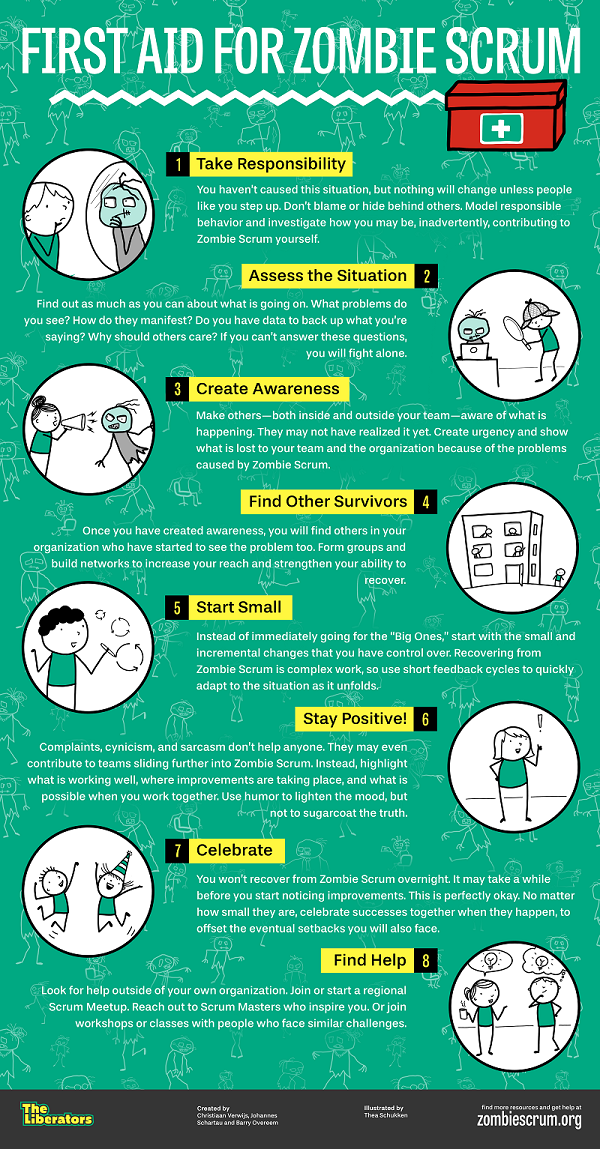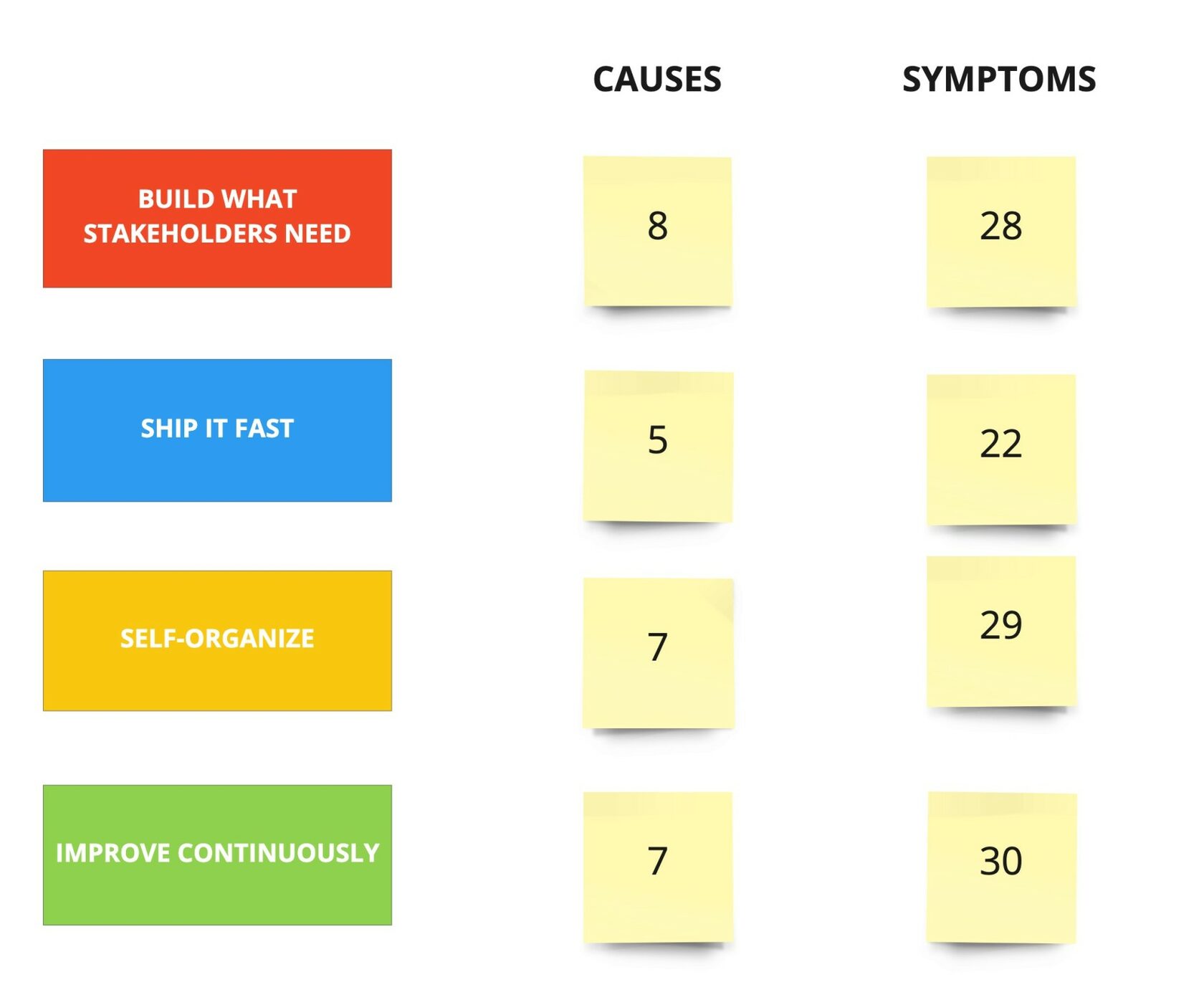Actually, the book has been written by three people - Johannes Schartau, Christiaan Verwijs, Barry Overeem, and published in November 2020 with the name "Zombie Scrum Survival Guide: a journey to recovery". If you buy the book, you can download some goodies from https://www.zombiescrum.org/ which includes a set of wonderful pictures (one of them is a cover photo for this article).
The content is organised in a logical sequence: you start with clarification what Zombie Scrum is and what might healthy Scrum looks like; then you go through four areas where problems could crop up - 'Build what stakeholders need', 'Ship it fast', 'Improve continuously' and 'Self-organize'.
So, actually, what is Zombie Scrum? (my interpretation and a viewpoint) It's that kind of Scrum where teams are going through motions and the Scrum Guide is used as a checklist to confirm that all 'rituals' happen, however, there is no intended value delivered. And you can add other spices - lack of motivation, using Scrum as a 'project management methodology' etc.
Okay, Zombie Scrum is here. What do we need to do? There is a nice poster that reveals the first aid response to zombified Scrum.

What I especially appreciate about the book is item #2 from the list - "Assess the Situation". Why so? First of all, the authors provide a structure to look at your reality. There are four areas where Zombie Scrum teams have issues (see the picture below) and every area has the associated causes and the symptoms that could give you a hint that the cause is present.

Hint.
One of the ways how this structure can be used is to give the symptoms as separate statements and ask the team to pick out the relevant ones to its situation. Then the team members can analyse which area has collected the highest number of symptoms and, consequently, causes. Essentially, it's a simulation of Zombie Scrum Symptoms Checker (https://survey.zombiescrum.org/).
The book has a part for every area and each part has got two chapters - "Symptoms and Causes" and "Experiments" with a description of symptoms and causes pertinent to the area and a set of experiments that might help you to address the cause.
Experiments are the most awesome part of the book! They give ideas of what you can try to do to recover from Zombie Scrum. Each area has 10 associated experiments which give us 40 possible experiments. Every experiment has an Impact/Effort to score to reflect the amount of effort required to do the experiment and a potential impact on the de-zombification of your Scrum. The description of an experiment contains steps and some findings which describe a resulting context when you've done an experiment or provide additional insights on how to run the experiment.
Hint. Connect the results of the cause/symptoms of the "scavenger hunt" step (the previous hint) with relevant experiments to create an experiments backlog for your recovery journey.
I thoroughly enjoyed "Zombie Scrum Survival Guide", it's an awesome book! Absolutely recommended.

